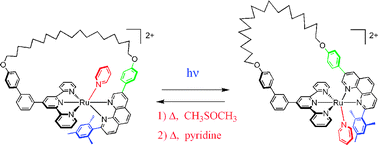Ruthenium-based light-driven molecular machine prototypes: synthesis and properties
Abstract
In the past years, many dynamic systems often referred to as “molecular machines” have been elaborated. They are generally set in motion by external stimuli like chemical, electrochemical, or photochemical reactions. Light irradiation seems particularly promising since the input signal can be switched on and off fast and readily on a very small place. In this tutorial review, we will highlight recent advances in the design and synthesis of various ruthenium(II) complexed


 Please wait while we load your content...
Please wait while we load your content...